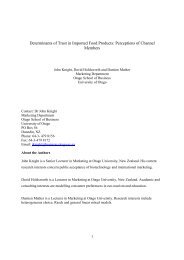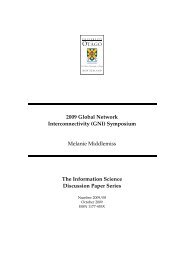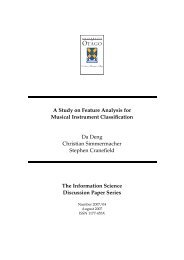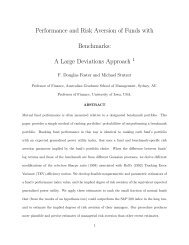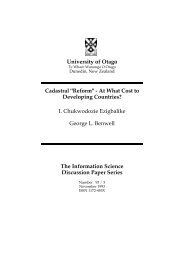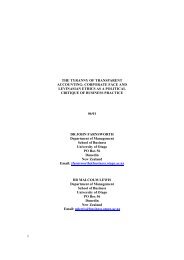Where is R2P grounded in international law? Anne-Marie Judson A ...
Where is R2P grounded in international law? Anne-Marie Judson A ...
Where is R2P grounded in international law? Anne-Marie Judson A ...
Create successful ePaper yourself
Turn your PDF publications into a flip-book with our unique Google optimized e-Paper software.
<strong>in</strong>tention as outl<strong>in</strong>ed <strong>is</strong> to d<strong>is</strong>perse th<strong>is</strong> <strong>in</strong>formation as widely as possible so that all<br />
persons <strong>in</strong>clud<strong>in</strong>g military, police, civil authorities and citizens have a broad<br />
understand<strong>in</strong>g <strong>in</strong> case a conflict breaks out. These prov<strong>is</strong>ions are an act of prevention<br />
to protect civilians and protected persons from harm, as re<strong>in</strong>forced by the prov<strong>is</strong>ions<br />
<strong>in</strong> the 2005 World Summit outcome document. The responsibility first rema<strong>in</strong>s with<br />
the state and if the state implements customary <strong>law</strong>s <strong>in</strong>to its education, local<br />
jur<strong>is</strong>diction, policies and frameworks, it would meet the prevention requirements of<br />
<strong>R2P</strong>. Th<strong>is</strong> <strong>is</strong> further re<strong>in</strong>forced <strong>in</strong> the last Geneva Convention <strong>in</strong> relation to<br />
<strong>in</strong>ternational armed conflicts.<br />
The Additional Protocol to the Geneva Convention of the 12 th August 1949 and relat<strong>in</strong>g to the<br />
Protection of victims of International Armed Conflicts, 8 th June 1977 265<br />
Th<strong>is</strong> Convention <strong>is</strong> the last of the five customary <strong>law</strong>s of the Geneva Convention<br />
series. It starts with a reaffirmation of the Charter of the United Nations.<br />
“Every state has the duty to refra<strong>in</strong> from the threat or use of force aga<strong>in</strong>st<br />
another sovereignty, territorial <strong>in</strong>tegrity or political <strong>in</strong>dependence of any state<br />
or <strong>in</strong> any other manner cons<strong>is</strong>tent with the United Nations Charter”.<br />
These prevention policies 266 are to ensure protection of civilians; protected by<br />
<strong>in</strong>ternational <strong>law</strong> and the pr<strong>in</strong>ciples of humanity derived from establ<strong>is</strong>hed customs<br />
and the dictates of public conscience. 267 Enforcement rules are added by <strong>in</strong>clud<strong>in</strong>g a<br />
superv<strong>is</strong>ion programme. Th<strong>is</strong> superv<strong>is</strong>ion <strong>is</strong> taken up by another state or an<br />
<strong>in</strong>ternational organization that has been asked to participate. The superv<strong>is</strong><strong>in</strong>g party <strong>is</strong><br />
called a protect<strong>in</strong>g power and it has the duty of safeguard<strong>in</strong>g the <strong>in</strong>terests of the<br />
parties to the conflict. 268 If a party <strong>is</strong> not selected by the states <strong>in</strong> conflict the<br />
International Red Cross Organization can offer its services. 269<br />
265 United Nations. (1977). The Additional Protocol to the Geneva Conventions 12th August 1949 <br />
and relat<strong>in</strong>g to the Protection of victims of International Armed Conflicts. New York : United <br />
Nations. <br />
266 Article 1(1) <br />
267 Article 2 (2) <br />
268 Article 5.1 page 3 <br />
269 Articles 5(3), 5(4), 5(5) and 5(6) page 3 <br />
<br />
84




